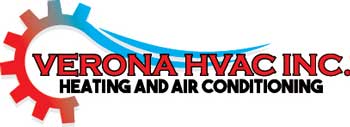
A furnace is often a background player for your home, keeping you warm during the cold winter months. It frequently won't be noticed until something goes wrong.
One source might be that your furnace has a cracked heat exchanger. It’s a potentially dangerous issue, so it’s critical to learn the evidence of a cracked heat exchanger and what you should do if you believe that might be the problem.
What Is a Heat Exchanger in a Furnace?
A heat exchanger helps move heat from the combustion chamber inside your furnace to the air that circulates inside the system. It usually handles this using coils or tubes that warm the air while acting as a barrier to keep the gasses produced in the combustion chamber, called flue gasses, from escaping out into your home.
Is a Cracked Heat Exchanger Dangerous?
Because of its central role, it isn't surprising that a broken heat exchanger can pose a risk. Cracks in the heat exchanger can allow dangerous gasses – including carbon monoxide, which can be lethal – to be distributed through your home.
For obvious reasons, don't ever use your heating if you suspect it has a cracked heat exchanger, as doing so could make the entire family ill. Contact an HVAC professional right away if you believe your heater has a cracked heat exchanger that needs to be repaired.
Four Signs of a Cracked Heat Exchanger:
- Furnace switches off: A crack in your heat exchanger can cause your furnace to switch off.
- Strange Smells: If the air coming out of your furnace has a powerful chemical scent, it could be an indicator that gasses are seeping through cracks in your heat exchanger. These byproducts, which may smell like formaldehyde, are a significant warning sign.
- Carbon monoxide alarm is triggered or you notice health problems: If a cracked heat exchanger is emitting carbon monoxide in your home, your carbon monoxide alarm should go off or family members could experience signs of carbon monoxide poisoning. Symptoms include headaches, dizziness, weakness, nausea, vomiting or feeling sleepy. If your alarm goes off or you feel unwell, leave the home right away and then call for help.
- Soot: If you see black sooty collecting around the exterior of your furnace, it’s more evidence something might be seriously wrong.
What You Can Do if Your Furnace Heat Exchanger is Cracked
If you suspect your furnace has a cracked heat exchanger, contact a professional well versed in furnace installation Santa Clarita right away so they can inspect your system and, if required, handle a furnace heat exchanger replacement. Costs often differ depending on the situation, but estimates run in the neighborhood of $1,000 to $3,000.
Estimates aside, the good news is that heat exchangers are generally protected by the warranty. You should review the warranty paperwork on your furnace, since while the warranty might not cover the entire cost of repairs, it still may significantly lower your bill.
How to Prevent a Cracked Heat Exchanger in Your Home
One of the most convenient ways to prevent a problem in your furnace overall is with regular furnace maintenance. Furnaces work the best when they run efficiently. Calling a skilled professional to examine your furnace for broken-down parts, clogged filters and other likely problems can help you avoid getting a big bill later on.
It’s also a good idea to review your furnace filters every few months – it’s encouraged some filters be swapped out every 90 days or sooner if they are dirty or grimy. While the filters aren't a part of the heat exchanger itself, the strain of drawing air through a clogged filter makes your entire furnace work longer to do its job. And the harder your furnace needs to run, the more deterioration pieces like the heat exchanger will sustain.
